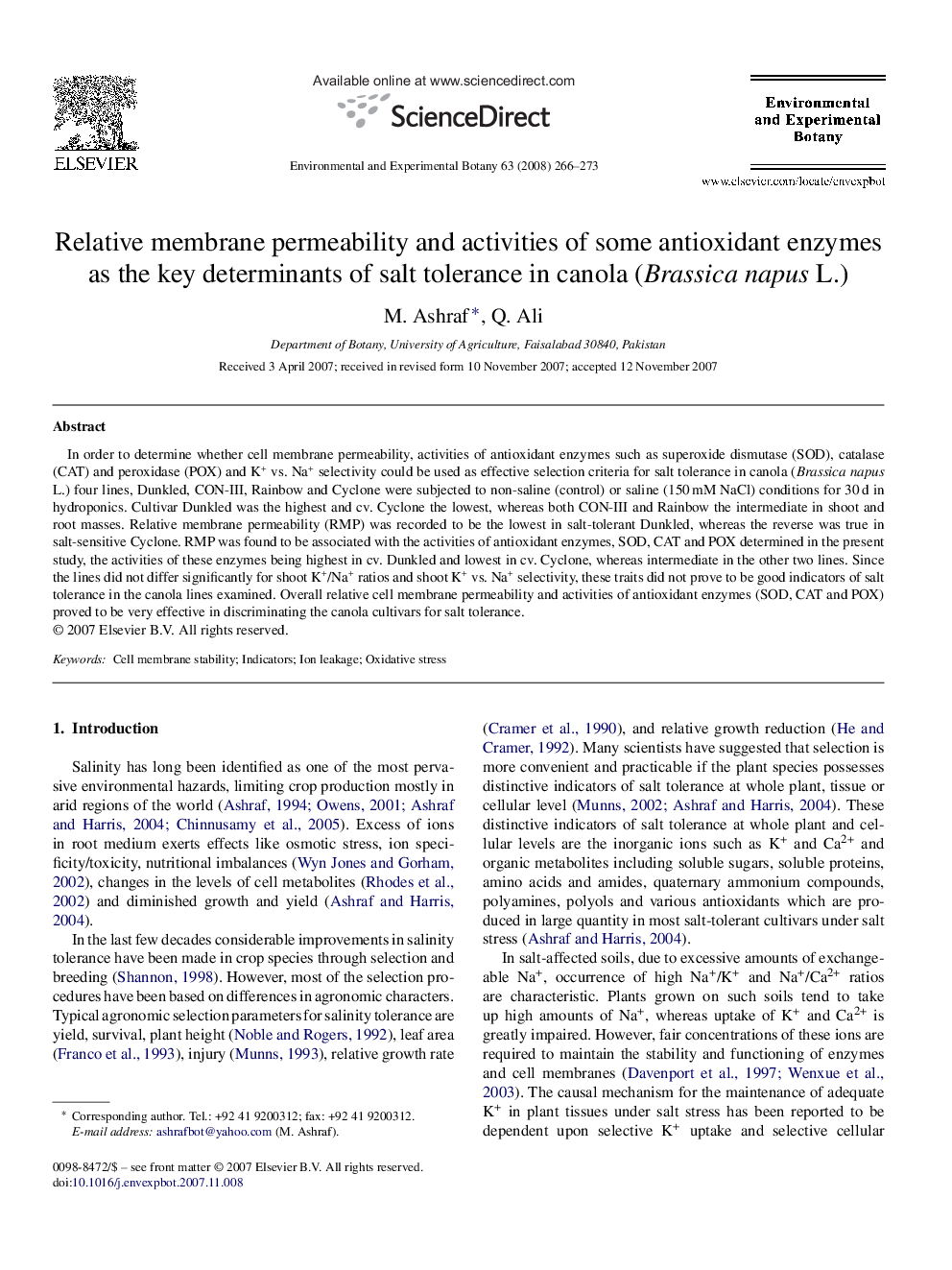| Article ID | Journal | Published Year | Pages | File Type |
|---|---|---|---|---|
| 4555299 | Environmental and Experimental Botany | 2008 | 8 Pages |
In order to determine whether cell membrane permeability, activities of antioxidant enzymes such as superoxide dismutase (SOD), catalase (CAT) and peroxidase (POX) and K+ vs. Na+ selectivity could be used as effective selection criteria for salt tolerance in canola (Brassica napus L.) four lines, Dunkled, CON-III, Rainbow and Cyclone were subjected to non-saline (control) or saline (150 mM NaCl) conditions for 30 d in hydroponics. Cultivar Dunkled was the highest and cv. Cyclone the lowest, whereas both CON-III and Rainbow the intermediate in shoot and root masses. Relative membrane permeability (RMP) was recorded to be the lowest in salt-tolerant Dunkled, whereas the reverse was true in salt-sensitive Cyclone. RMP was found to be associated with the activities of antioxidant enzymes, SOD, CAT and POX determined in the present study, the activities of these enzymes being highest in cv. Dunkled and lowest in cv. Cyclone, whereas intermediate in the other two lines. Since the lines did not differ significantly for shoot K+/Na+ ratios and shoot K+ vs. Na+ selectivity, these traits did not prove to be good indicators of salt tolerance in the canola lines examined. Overall relative cell membrane permeability and activities of antioxidant enzymes (SOD, CAT and POX) proved to be very effective in discriminating the canola cultivars for salt tolerance.
